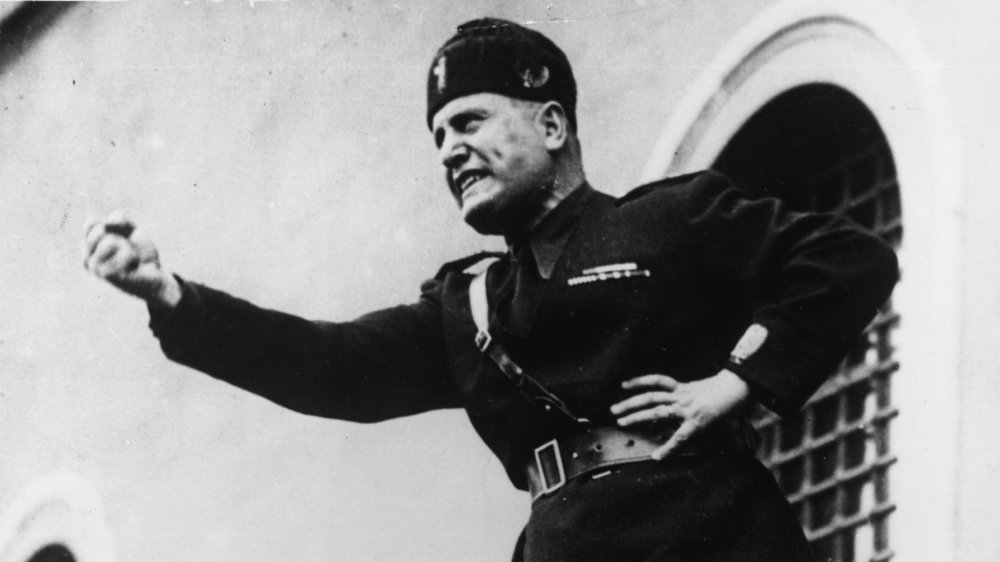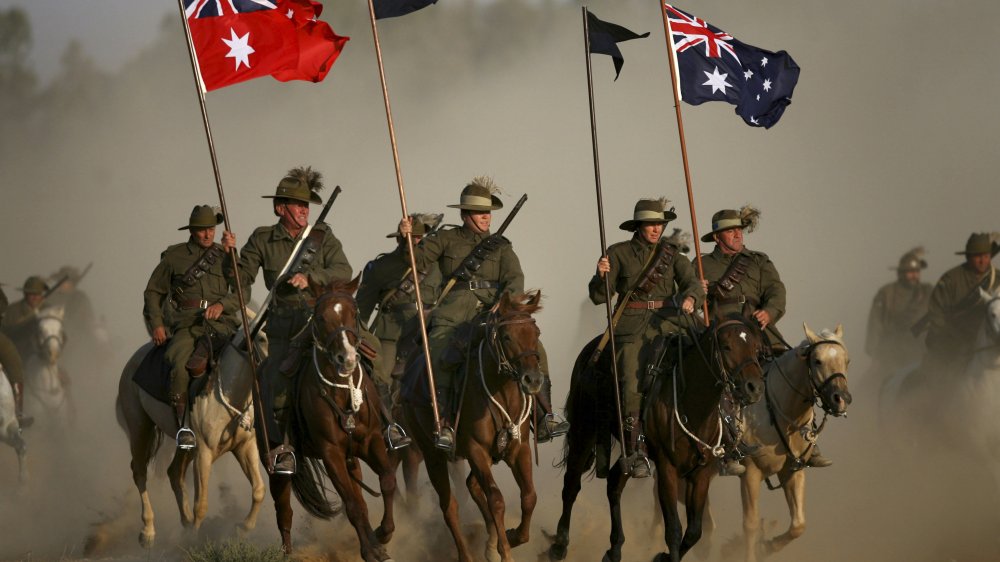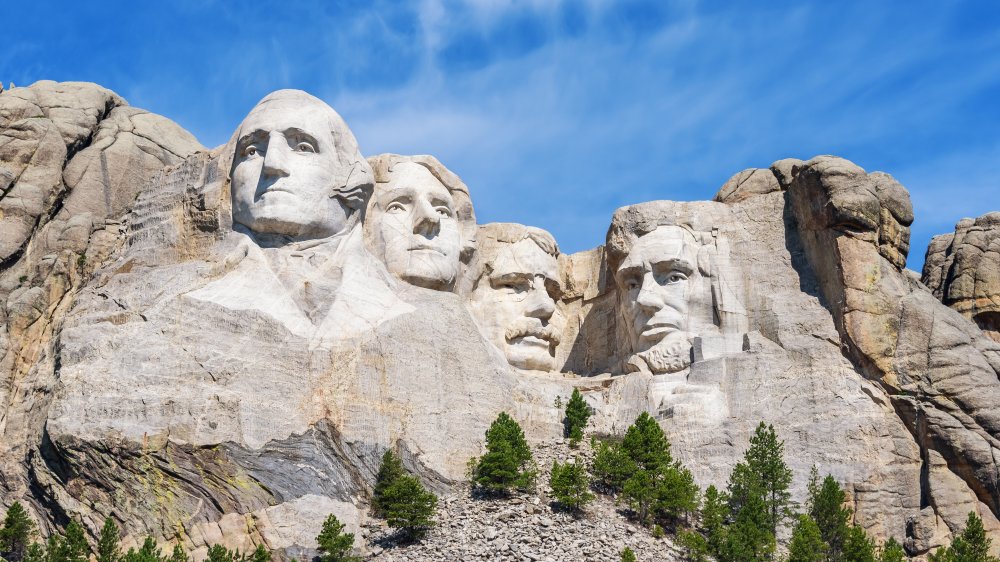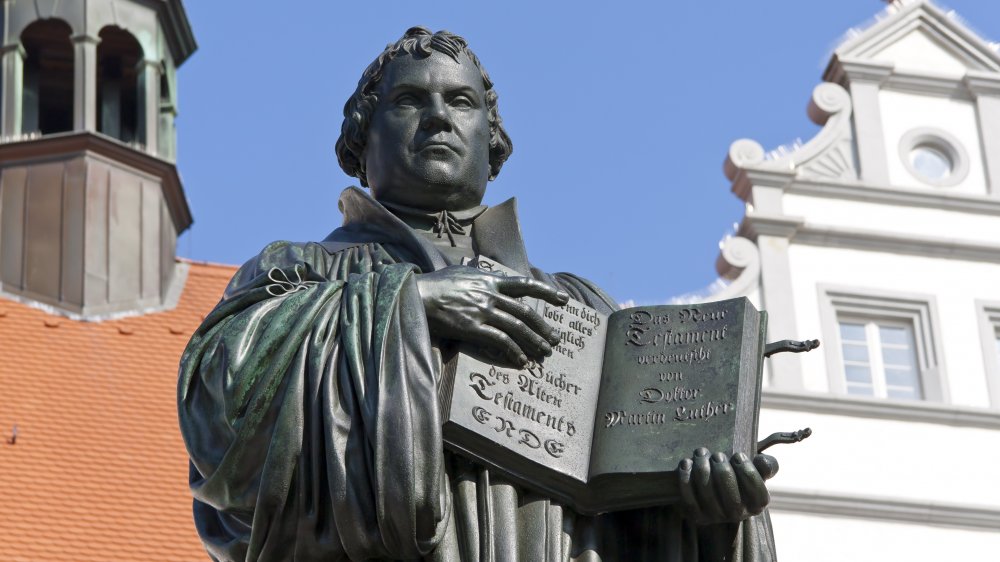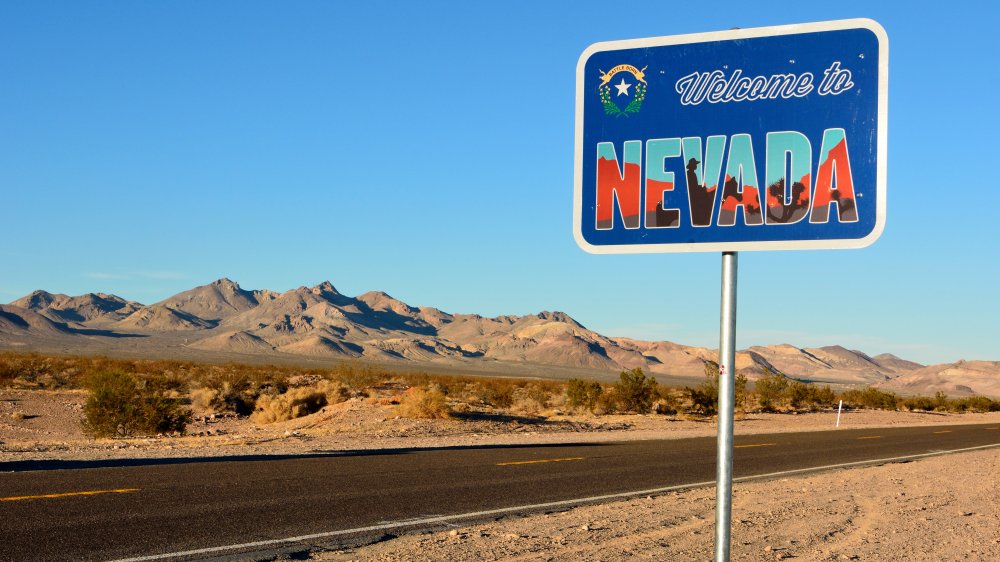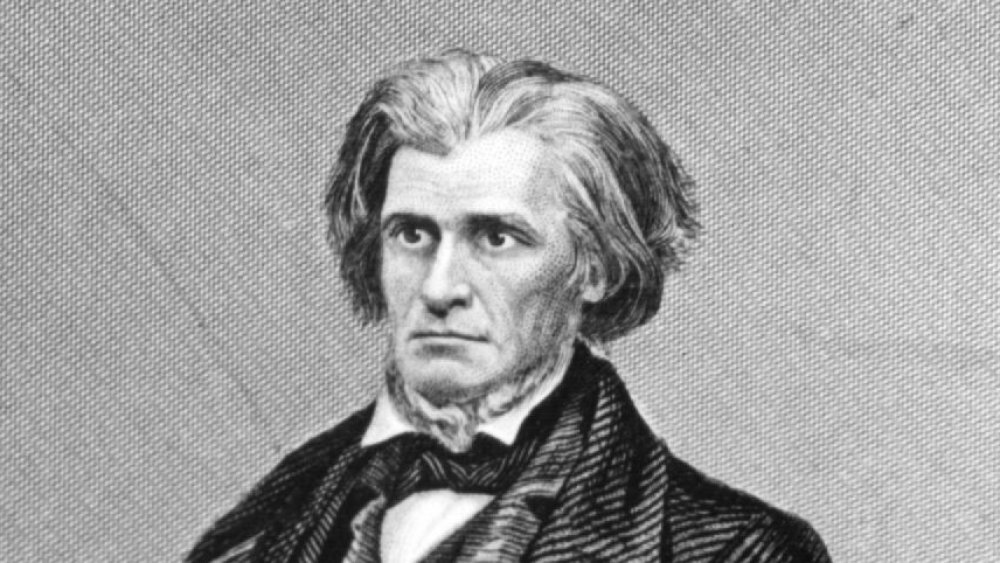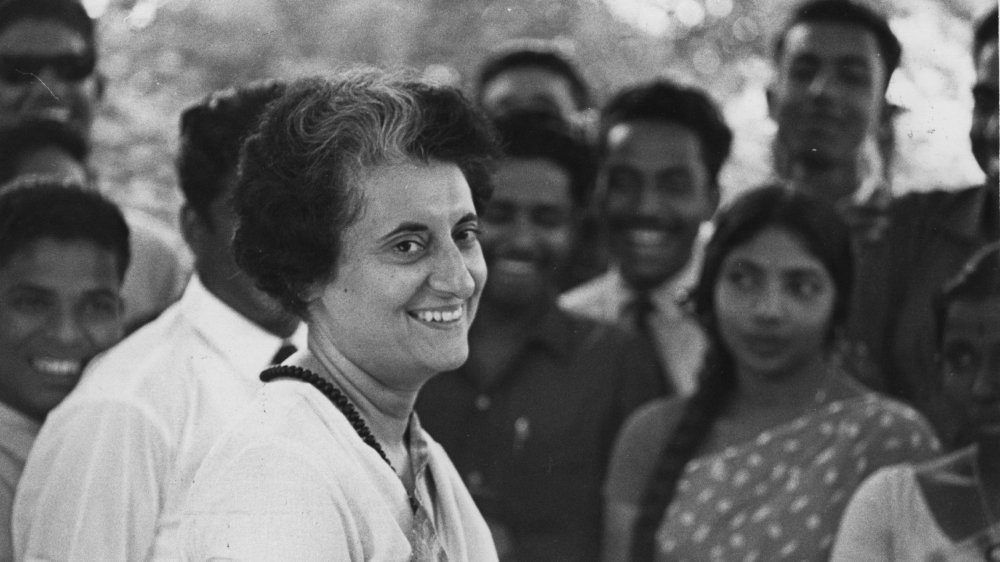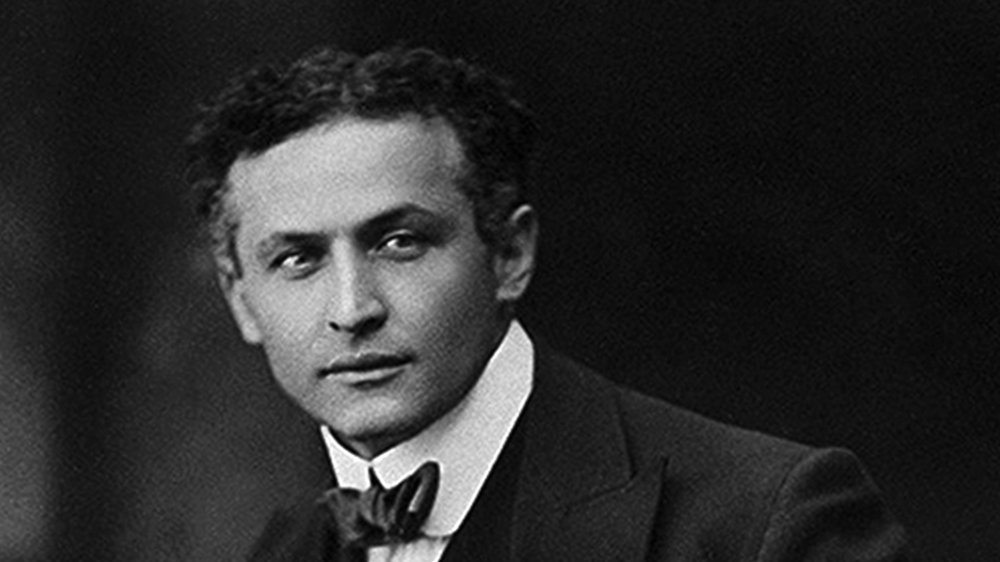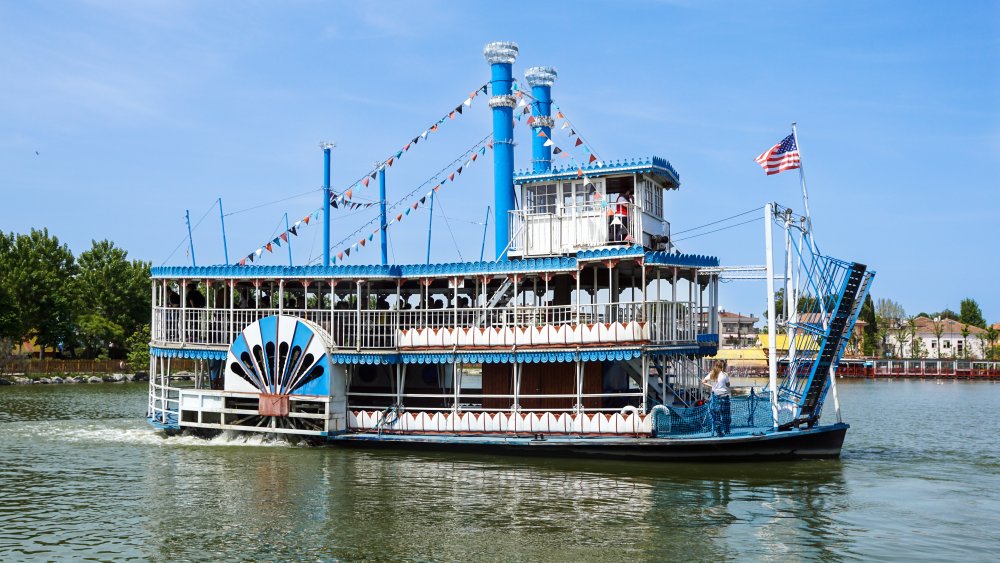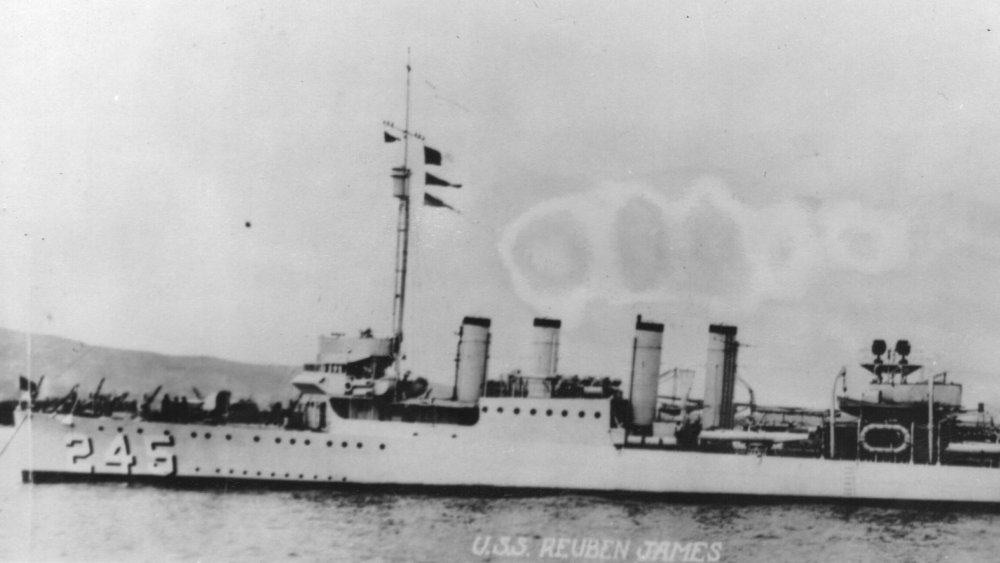Noteworthy Historical Events That Happened On Halloween
Ah, Halloween! For those who enjoy autumn, holidays, and spooky stuff (and who doesn't?), October 31 is usually surrounded by the biggest red circle in their calendar ... and probably also some cute doodles of skulls and ghosts because hey, it's Halloween. Good old All Hallows' Eve dominates the minds of young and old alike, from trick-or-treating to cool parties and all the horror paraphernalia that surrounds the date.
Still, that's not all Halloween is. With all the pumpkin-carving, decorations, and costumes taking up our mindspace, it's easy to forget that all sorts of non-Halloween things have also happened on this glorious day. History doesn't really discriminate when it comes to the dates important events happen, so plenty of very important historical milestones have taken place on this creepiest of all holidays, and they weren't even particularly creepy. Well, all right, some of them weren't creepy. Let's take a look at the noteworthy historical events that happened on Halloween.
Halloween 1922: Benito Mussolini becomes the Prime Minister of Italy
As Encyclopedia Britannica tells us, October 31, 1922 was the day Benito Mussolini became the youngest prime minister of Italy. In the grand scheme of things, this is generally considered an incredibly bad event, since it paved the fascist's way to full dictatorial power.
Mussolini's rise to becoming the country's head honcho had been assisted by a number of economic and political factors, but as Biography notes, the man was far from an ordinary politician. The charismatic orator started out as a socialist, but he was eventually expelled from the party for liking World War I a bit too much. Mussolini became a huge nationalist who dreamed of elevating Italy back to the power level of the Roman Empire. His rise to power started in 1919, when he organized the country's assorted far-right factions into a single force, the Fascist Party. He quickly created a reputation as a frightening power player by establishing a paramilitary force known as the Black Shirts, who terrorized his opponents and increased his own power.
Once Mussolini became prime minister, he quickly started undermining the country's democracy until he'd established himself as the world's first (but sadly, not the last) fascist dictator in 1925.
Halloween 1917: The last great cavalry charge at the Battle of Beersheba
As SBS News reports, the Battle of Beersheba isn't as well-known as some of the other Australian efforts in World War I, but the sheer audaciousness of its most famous feature is certainly worth remembering.
On October 31, 1917, the 4th and 12th regiments of the Australian Light Horse Brigade were desperate and dying of thirst. They had basically three choices: Perish, get captured by the enemy, or somehow manage to take Beersheba, the fortified desert town in an area that belongs to Israel today, but was held by a strong German-led Turkish force at that point. Instead of following the convention of the era and going to the battle on foot, Brigadier General William Grant decided to take a page out of the history books and order a good, old-fashioned attack on horseback.
Against a heavily armed and fortified town, this could — and by all rights, should – have been a suicide mission. Fortunately, this meant that the enemy was absolutely not expecting it, and the surprised foe witnessed 800 men on horseback suddenly charging from the dust cloud-covered desert and storming the place in history's last great cavalry charge. "Captured Turkish officers told us they never dreamed that mounted troops would be madmen enough to attempt rushing infantry redoubts protected by roaring machine guns and artillery," a 5th brigade trooper witnessing the attack later wrote.
Halloween 1941: The half-finished Mount Rushmore is declared ready
Located in the Black Hills of Keystone, South Dakota, Mount Rushmore is one of the most famous landmarks in the U.S. and, for that matter, the world. The giant sculpture's 60-foot granite visages of George Washington, Thomas Jefferson, Theodore Roosevelt, and Abraham Lincoln leave the visitor in awe, but while it's unlikely that the mountainside could be any more iconic, it was originally supposed to be even more impressive.
As the U.S. Department of the Interior tells us, the national memorial was the grand idea of State Historian Doane Robinson, who hired esteemed sculptor Gutzon Borglum and, with the help of other state big shots, convinced Congress to support the project in 1925. The arduous work to reshape a mountain started in 1927, and the original idea was that the sculpture should depict the presidents from the waist up. Unfortunately, the sculptor died in 1941, and since the country was slowly but inevitably drifting into World War II, there wasn't much incentive to keep the project going. So, decisions were made, and on October 31, 1941, the work-in-progress Mount Rushmore National Memorial was finished. And that is why the Washington part of the statue sort of has clothes and everything, whereas Lincoln's head is barely peeking out of the mountainside.
Halloween 1517: Martin Luther jump-starts the reformation
Martin Luther (the German one, not the King, Jr. one) started out as a fairly obscure monk and scholar, but as History tells us, October 31, 1517 changed all that and made him one of the more influential figures in the history of Christianity. That was the day he introduced his famed 95 theses to the world, as well as the sturdy door of the Wittenberg castle church. The popular story goes that he dramatically nailed his papers on the door, but it's more likely that he actually adapted a more practical approach and merely hung them up.
The theses themselves were far from fiery preaching. They were academically questioning writings that centered around Luther's belief that the Bible is the chief religious authority and faith was central to salvation instead of deeds. In an era where the Catholic Church was using believers' money to build the opulent Basilica of St. Peter, this resonated heavily with the people, and Luther's writings spread like wildfire. This landed him in pretty hot water with the Holy See, to the point that Pope Leo excommunicated him from the Catholic Church in 1521. Nevertheless, his writings codified the basic tenets of the Protestant reformation.
Halloween 1864: Nevada is admitted as a state
As History tells us, on October 31, 1864 the U.S. Congress admitted Nevada as the 36th state. It was a truly special occasion, but it was also a bit of a special case. Nevada only had around 40,000 people, which was well under the statehood requirement of 60,000. However, the wannabe state's recently-discovered silver deposits of the Comstock Lode required heavy investments and special equipment to mine, so in order to make life easier for themselves, lots of powerful people willing and able to invest in mining were suddenly very interested in bringing Nevada to statehood. This alone might not have been enough, but it just so happened that President Abraham Lincoln was working on his slavery-banning 13th Amendment, and he'd spent a lot of time manning the territorial offices of Nevada with people loyal to him.
There was just one problem. In order to get Nevada admitted as a state in time for it to support Lincoln in the upcoming presidential election and his slavery-ending endeavors, things had to move really quickly. To make this happen, the Nevada constitutional delegation spent $3,416.77 (roughly $56,400 in today's money) to send a record-length telegram to Washington, D.C. The telegram contained their proposed state constitution in its entirety, and the wild move ultimately paid off with a rapid-pace congressional approval. Nevada had Lincoln's back, and just a few short months later, on January 31, 1865, the Congress approved the 13th Amendment.
Halloween 1828: Polls open on one of the most significant Presidential Elections in history
The world has certainly seen its share of mud-slinging during presidential elections, but as Encyclopedia Britannica tells us, the 1828 presidential race between Andrew Jackson and John Quincy Adams was a particularly unsavory, yet also important one. Per the Historical Dictionary of the U.S. Presidency, the polls opened on October 31, and since Jackson had controversially lost the previous election to Adams, tensions were high from the get-go. Jackson's people smeared Adams as a nasty aristocrat who was misusing tax funds, and a "corrupt bargainer." Meanwhile, Jackson's fondness of gambling and dueling became a target, and his opponents attempted to portray him and his wife, Rachel, as "adulterers."
Jackson ultimately won by a comfortable margin, but the election became an important template in more ways than one. Not only was it the first election where most states chose which candidate they endorsed, but all the nastiness introduced America to political campaigning and played a huge role in defining the country's political parties.
Halloween 1984: India's Prime Minister Indira Gandhi is assassinated
Indira Gandhi is one of the most influential Gandhis in the history of India, though as Biography notes, she wasn't actually related to the most famous one. She was actually the daughter of Jawaharlal Nehru, who was the country's first prime minister and a close associate of Mahatma Gandhi. Because life is a funny thing, she ended up acquiring the Gandhi surname by marrying a dude who was completely unrelated to the Mahatma, and became a prime minister like her father.
Unfortunately, Halloween 1984 saw her tenure and life come to an abrupt end. According to History, Gandhi's prime ministership was full of ups and downs, and she had more than her share of critics. The most aggressive ones were ultimately her own two Sikh bodyguards, Beant Singh and Satwant Singh, who riddled her with bullets on October 31 and surrendered. The assassination occurred in the aftermath of Operation Blue Star, which History tells us was a Gandhi-ordered military attack on the Sikh religion's holiest temple, which killed hundreds of militant Sikhs and sent their brethren into an uproar.
Curiously, Beant Singh was almost transferred away from Gandhi's immediate space before the assassination. The prime minister vetoed the move because she felt she could trust him.
Halloween 1926: The death of Harry Houdini
Wherever great escape artists and stage performers are discussed, Harry Houdini's name inevitably enters the conversation. Houdini was a phenomenal performer who had a knack for PR and who prepared his elaborate tricks equally elaborately. However, this backfired in a massive way in 1926, when he was caught tragically unprepared.
As History tells us, Houdini was attending a social event and nursing his injured ankle on a couch, when a student named J. Gordon Whitehead approached him. Whitehead had heard that Houdini could take a punch to the gut without flinching, and was keen to know whether this was true. Unfortunately, he wasn't content with mere words, and when Houdini confirmed the story to him, the student proceeded to hit the magician with a series of four to five enthusiastic, powerful body shots.
Houdini did actually have a way to withstand such punches, but the surprise attack and lack of prep time caught him fatally unawares. Although he hand-waved the incident, the blows had actually ruptured his appendix. He spent the following few days working through terrible agony, and when he finally saw a doctor, it was too late. The 52-year-old Houdini died on October 31, 1926.
Halloween 1837: The steamship Monmouth disaster
There are varying accounts of what happened to the steamship Monmouth when it was sailing the Mississippi near Baton Rouge on the dark night of October 31, 1837, and none of them are nice. According to a contemporary report by the Natchez Daily Courier, the ship was carrying nearly 700 Native Americans when it catastrophically collided with another vessel and broke to bits. The report estimated that 230 of the passengers died, and many of the survivors were badly injured.
According to the Advocate, the truth may be a bit more complicated. Apart from the true number of victims likely being upwards of 300, various accounts of the incident indicate that the boat was massively overloaded, the weather conditions were extremely bad, and the Monmouth's crew might have been liberally sampling the barrels of whiskey the boat was carrying. What's more, the vastly irresponsible operation would have been tragic for the passengers even if it would have succeeded. The journey was a part of the infamous Trail of Tears, and the Native Americans onboard had already been forced to relocate across the continent. As such, historian Yvonne Lewis Day has pointed out that as horrific as the incident was, it was still just a fragment of a much bigger tragedy. "It was part of a much larger situation that had national implications," Day said. "It was not just a little vessel out there."
Halloween 1941: Germany sinks the USS Reuben James
As the National And Records Administration tells us, the U.S. Navy's firsthand involvement with World War II is generally thought to have started with the attack on Pearl Harbor on December 7, 1941. However, some unfortunate U.S. sailors had already gotten their first taste of the coming war on October 31, 1941, when the destroyer USS Reuben James received the dubious honor of becoming the first U.S. ship sunk by the Germans during WWII.
The U.S. Navy had taken to escorting convoys carrying war supplies to Great Britain. Unfortunately for them, German submarines targeted these convoys, and everyone involved was considered "fair game." When the Reuben James was with a convoy labeled HX-156, a U-Boat torpedoed and sunk it. 115 out of the 160 crewmen perished.
While the news of the incident prompted many people to contact the Navy in order to find out the fate of their friends and relatives, the tragedy went largely unnoticed by the public at large. However, one notorious folk artist was taking notes, and the incident was later immortalized in the Woody Guthrie song "Sinking of the Reuben James."
Halloween 1999: EgyptAir Flight 990 crashes
In the early hours of October 31, 1999, EgyptAir flight 990 from Los Angeles to Cairo crashed into the ocean in shocking circumstances that officials still can't agree on, according to Encyclopedia Britannica. The crash killed all 14 crew members and 203 passengers, among them a group of Egyptian military personnel who were returning from a Stateside training exercise.
The plane's fate was a strange one, since everything seemed to be going fine until about 1:50 AM, when it suddenly started a rapid descent from 33,000 feet at almost the speed of sound. At 16,000 feet, it suddenly started climbing higher, reaching 25,000 feet and changing direction before losing its engine and screaming into the ocean.
The investigations of the crash yielded differing results. Egypt's officials concluded that a mechanical failure caused the accident, while the U.S. National Transportation Safety Board blamed the copilot. The latter theory was based on the material recovered from the cockpit voice recorder, which revealed that the relief copilot Gameel al-Batouti reportedly insisted to take over the copilot seat, and while the captain of the aircraft left the cockpit to use the toilet, the autopilot was disabled and the plane started descending so suddenly and rapidly that the conditions simulated zero gravity. Combined with some dialogue on the tape, this caused the NTSB to conclude that al-Batouti was responsible for the incident.
Halloween 1993: The death of River Phoenix
On October 31, 1993, the world of entertainment received a crushing blow when River Phoenix died well before his time. As Biography tells us, Phoenix was on a break from filming Dark Blood when he decided to spend some of his downtime at the Viper Room, a Los Angeles nightclub co-owned by Johnny Depp. He was in the company of his girlfriend Samantha Mathis, as well as his brother Joaquin and sister Rain.
Unfortunately, the night ended in tragedy, when Phoenix took a "cocktail of drugs" and his condition started declining rapidly. He began having seizures outside the club, and though Rain attempted to help him and Joaquin called 911, the young actor never recovered. Paramedics couldn't revive him at the scene, and Phoenix was declared dead in the early hours of October 31 at the Cedars-Sinai Medical Center. His cause of death was "acute multiple drug intoxication" from lethal amounts of morphine and cocaine. He was only 23-years-old.

